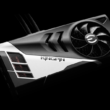Everyone remembers NASA’s glory days in the 1960s. Neil Armstrong and Buzz Aldrin landing on the Moon while Mike Collins watches from the service module. In those days, the United States was in a space race with the Soviet Union. After the Soviet Union launched Sputnik 1 in 1957, they officially became the first nation to achieve spaceflight. It was with that drive and ambition that led NASA to eventually work their way towards the Moon. It took multiple programs (Mercury, Gemini, and eventually Apollo) in order to get there, but during Apollo 11, that feat was achieved. But, that’s nowhere near the end of our journey towards the stars…

Fast forward beyond Apollo (in US spaceflight anyhow) comes the Shuttle program. On an early spring morning in Cape Canaveral, STS-1 launches from Launch Pad 39A, with its glorious painted-on white fuel tank (subsequent launches did not have a painted fuel tank). This kicked off an entire new echelon of human spaceflight, where the new objective was to establish a presence in LEO (Low Earth Orbit) and eventually begin work on the International Space Station (ISS) among other projects (Hubble being a very noteworthy one). Five separate Shuttles flew an astonishing 135 missions during the program accumulating over 1300 days in space, not including the first Space Shuttle known as “Enterprise” which was used as a test vehicle to test landing and other aspects of shuttle flight, but it was never flown in space. One of the significant sets of missions the Shuttle flew was part of what was called in 1998 as “Project Freedom” which eventually became the International Space Station Program.
Ever since the first module launched in November of 1998, ISS has grown to one of humankind’s top achievements, as it’s a collaboration between many countries and controlled 24/7/365 around the world by engineers and the like. In fact, ISS has been occupied with people for over 20 years! It is truly an amazing accomplishment. Let’s talk a little about ISS. It’s massive, and it’s above us, orbiting every 90 minutes around Earth. Crazy right?

Astronauts have flown to ISS in a variety of methods over the years. Soyuz, being the oldest capsule (albeit with many, many revisions since it’s first debut in the 1960s) was, and still is one of the primary methods of travel for astronauts to get to and from the ISS. Once the Space Shuttle Program (SSP) began, US astronauts started flying on it to get to the Space Station, and while stays were shorter at times, this was yet another method of bringing up new ISS modules as well as new experiments and supplies for the onboard crew. ISS is comprised of two main segments: the USOS (United States Orbital Segment) and the RS (Russian Segment). It’s ~1000 m^3 in volume and chock full of a combination of systems and payloads for the crew to maintain and work. As far as the life of ISS, it’s not currently known what will happen years in the future, whether it’ll eventually be de-orbited, used by commercial entities, or continued to be flown in its current fashion. But, even with ISS still flying, the next phase of human space flight was already happening.
In 2011, a major transition was happening at NASA. It was time to look beyond LEO and figure out what our next move was. The initial plan was a program dubbed “Project Constellation”. It included vehicles and rockets that got us back to the Moon and eventually to Mars. Unfortunately, the program was incredibly expensive, with the plan to use a new rocket called “Ares” I and V to take up humans and landers/cargo, respectively. The program as it was initially laid out was a bit too much for NASA to take on with its current budget, and was difficult to do without the help from commercial partners. This is where the program got cancelled and swapped in favor of the Commercial Crew Program, among other objectives (like asteroid redirects, which is a whole other story not worth talking about here). Orion, the main holdout from that program eventually moved forward into NASA’s latest and greatest program, named “Artemis”, developed by Lockheed Martin. You can think of Orion as a very similar (but much larger sister) to the Apollo capsule. Orion has a maximum capacity of six people, and while some systems may be more traditional (such as solar arrays) an entirely automated docking system and fully glass cockpit make it incredibly modern and capable for future missions to the Moon and beyond. Orion being one major component of the Orion program will be propelled into orbit with the help of the SLS (Space Launch System) Rocket which is by far one of the most massive vehicles NASA has ever made.
The Artemis Program, started in 2017 has the goal of bringing Astronauts to the Moon, Mars and beyond with a series of both NASA vehicles and commercial vehicles. This joint effort is ana amazing step forward for human spaceflight, as it allows NASA’s expertise in administration, safety and engineering to work hand-in-hand with innovative engineering from companies like Space-X, Blue Origin, Boeing, Dynetics, and others to get us there. At the same time of having goals of returning to the moon, the Commercial Crew Program (CCP) has been in full swing. As of this writing, there has been three human-occupied commercial crew vehicles arrive at station, fully certified to ferry astronauts to and from the ISS.

As of this writing, ISS has seven astronauts aboard the International Space Station, four of which flew up on a SpaceX dragon capsule, the other three of which flew up on a Soyuz spacecraft. Artemis, meanwhile plans to include a Lunar Gateway (think of it as a much smaller ISS, but meant to be a docking station for astronauts going to and from the Moon), multiple Moon landers and new vehicles, as well as a moon base somewhere down the line. Did I mention this was all happening in the “human-spaceflight” section of NASA? NASA also is responsible for deep space missions, earth science, mars rovers (curiosity anyone?) and much, much more. This workforce of scientists, engineers, and others truly are making strides every day. The countless spin-off technologies created as a byproduct of space missions and research alike is astonishing and taken for granted by humans on a daily basis (memory foam sure is comfortable).
So, is NASA still around? You tell me. In this author’s opinion, NASA is not only still around, but making bigger leaps for mankind than ever before.









